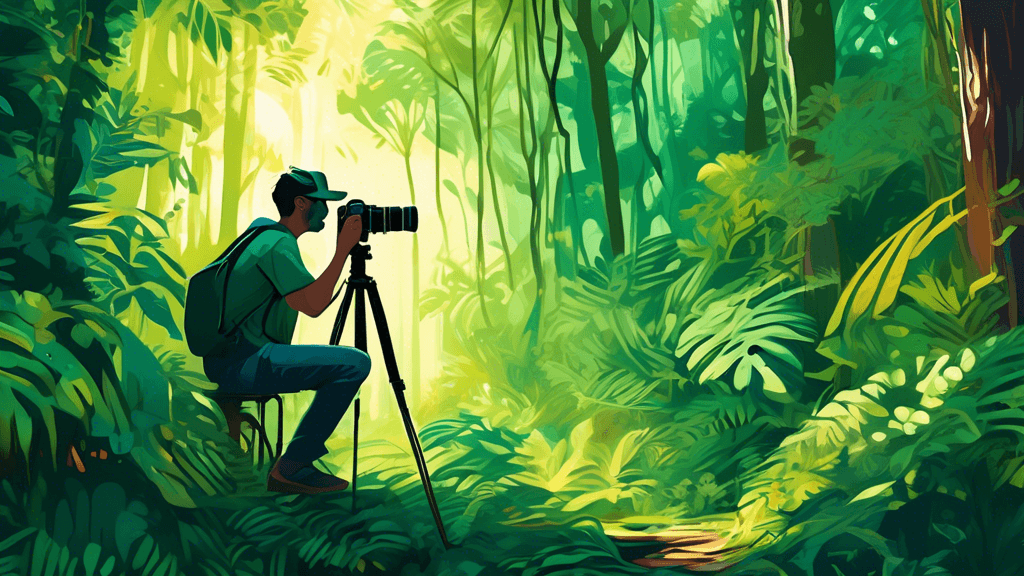
Capturing Light: Mastering Photography in Dense Forests
Share
Understanding the Challenge of Dense Forest Photography
Photographing in dense forests presents a unique set of challenges and opportunities for photographers. The complexity of lighting, the richness of colors, and the intricacy of compositions require a deep understanding of photographic techniques and environmental awareness. But who exactly stands to benefit from mastering this skill? Whether you're a professional photographer looking to expand your portfolio, a photography enthusiast eager to tackle new environments, or an environmental conservationist aiming to document and protect natural habitats, mastering forest photography is invaluable.
The Role of Light in Forest Photography
One might ask, why is light so crucial in forest photography? Light in a dense forest is dynamic and varies in intensity and color. It filters through the leaves and branches creating patterns and highlights that can either make or break your photograph. Understanding and harnessing this light is key to capturing breathtaking images that truly encapsulate the essence of a forest.
Types of Forest Light
Light in forests can be broadly categorized into three types:
- Diffused Light: On overcast days, the clouds act as a natural diffuser, creating soft, even lighting that minimizes harsh shadows and highlights. This light is ideal for capturing the subtle textures and colors of the forest.
- Dappled Light: When sunlight filters through the canopy, it creates a pattern of light and shadow on the ground, known as dappled light. This can add a magical, almost mystical quality to your photos, but it also poses exposure challenges.
- Golden Hour Light: The warm light during sunrise and sunset, known as the golden hour, offers remarkable lighting for forest photography. The low angle of the sun illuminates the forest with a warm, golden glow, enhancing the three-dimensionality of the forest scape.
Techniques for Mastering Forest Photography
To overcome the challenges and leverage the opportunities presented by dense forest environments, photographers must adopt specific techniques. Here are several strategies that can elevate your forest photography:
Managing Exposure
Controlling exposure is crucial in capturing the light variations in forests effectively. Due to the high range of contrast, especially under dappled light, using manual mode on your camera allows for better control over exposure settings. Bracketing exposures, where you take several shots of the same scene at different exposure levels, can also be particularly useful. This technique allows you to capture greater dynamic range than what your camera could originally handle in a single shot.
Using the Right Equipment
Choosing the right gear can significantly impact your ability to capture stunning forest images. A tripod, for instance, is indispensable due to the lower light conditions typical of dense forests. It stabilizes your camera, allowing for longer exposure times without the blur caused by handholding. Additionally, a polarizing filter can enhance the vibrancy of the scene by reducing glare and increasing color saturation.
Composition and Perspective in Forest Photography
Composing a photo in a chaotic forest environment requires a thoughtful approach. Here are some tips to help you create visually striking compositions:
- Look for Leading Lines: Use paths, streams, or fallen logs to lead the viewer’s eye through the image.
- Incorporate Layers: Including various layers in your shots — from foreground details to background elements — can add depth and interest to your compositions.
- Focus on Details: Sometimes, focusing on the smaller details like a cluster of leaves or an interesting bark texture can yield compelling imagery.
Final Thoughts and Call to Action
Mastering the art of photographing dense forests is not only about patience and technique but also about passion and respect for the natural world. As Ansel Adams once said, A photograph is often looked at - seldom looked into.” Let your forest photography be a window into the unseen depths of nature.
I encourage you to take your camera and explore the nearest forest. Remember, every forest has its own character and light, and the only way to truly capture its essence is by experiencing it first-hand. Experiment with different techniques, find your unique style, and most importantly, enjoy the journey of becoming one with nature through your lens.





